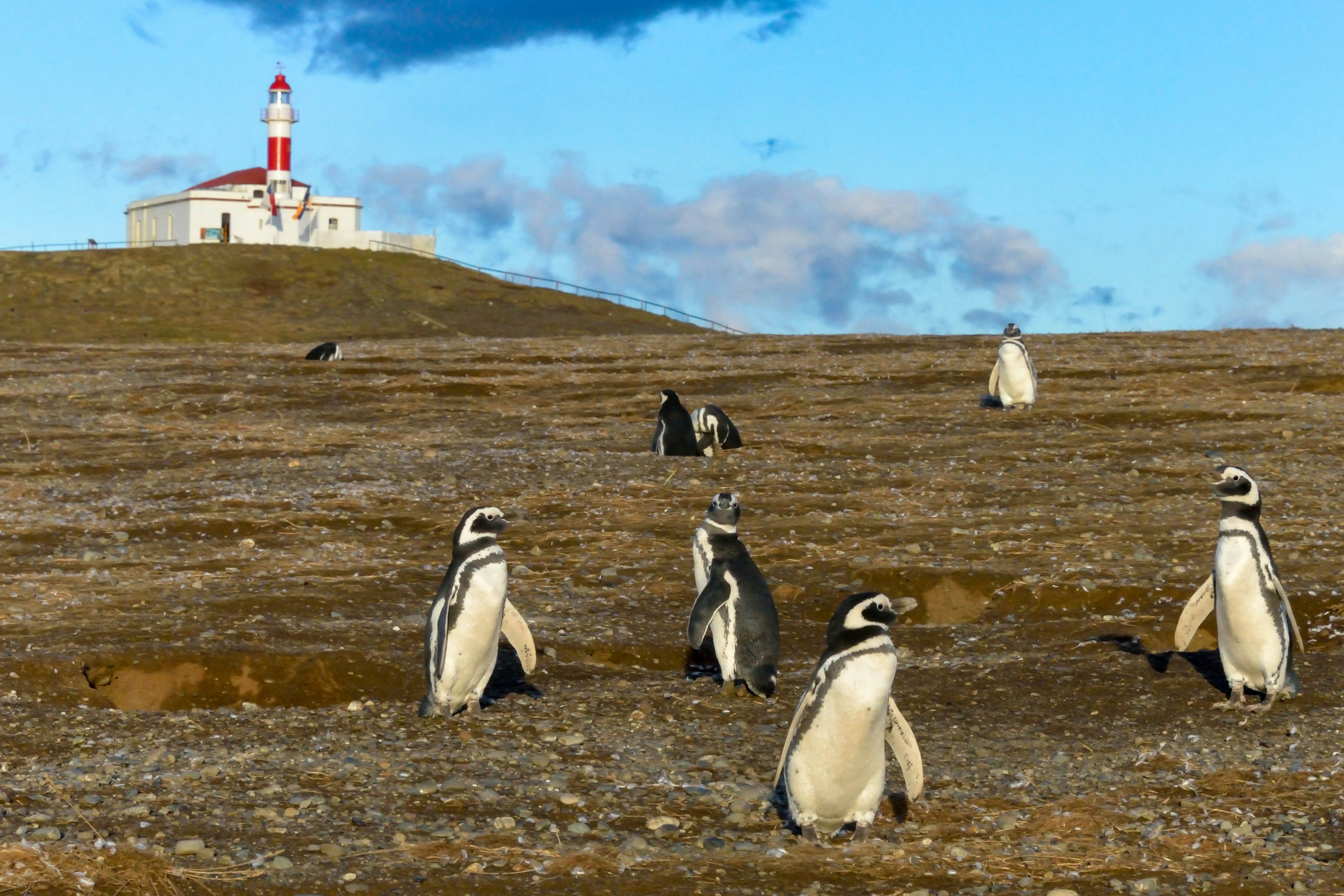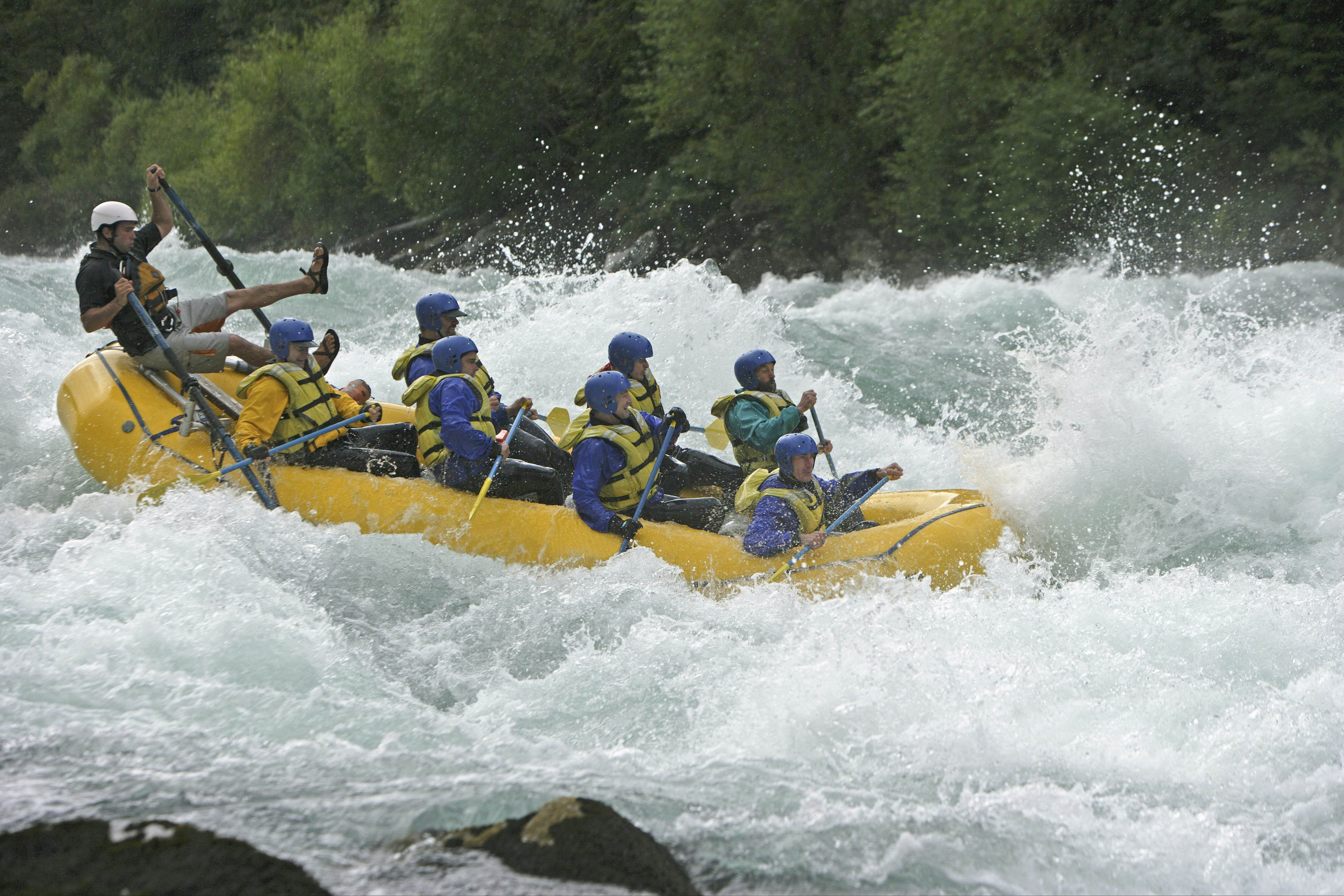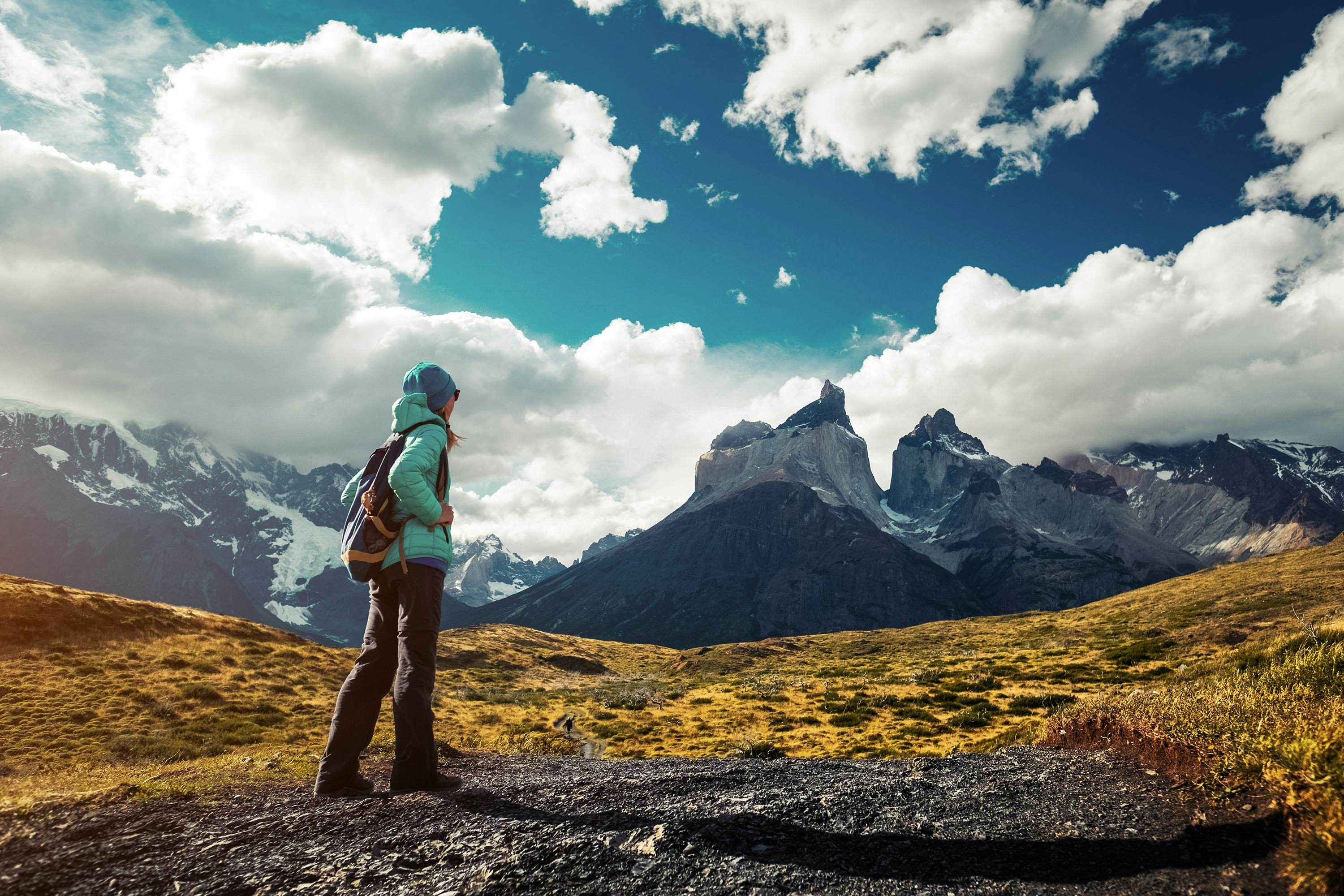Patagonia, with its breathtaking landscapes of expansive pampas, majestic mountain ranges, and shimmering glacial rivers, beckons adventurers yearning for immersive outdoor experiences. Determining When Is The Best Time To Travel To Patagonia depends on your desired activities and priorities. TRAVELS.EDU.VN is here to guide you in crafting the ideal Patagonian adventure, ensuring you make the most of this remarkable destination with expertly curated travel plans. Explore this comprehensive guide to discover the optimal time to visit, ensuring an unforgettable trip tailored to your unique interests, whether you crave exhilarating hikes, serene wildlife encounters, or captivating cultural experiences. Consider the shoulder seasons for fewer crowds and pleasant weather, and let TRAVELS.EDU.VN handle the logistics so you can focus on creating lasting memories.
1. Understanding Patagonia’s Seasons: Your Guide to the Perfect Trip
Patagonia’s allure lies in its dramatic landscapes and diverse activities, but the best time to visit hinges on the region’s distinct seasons. This understanding ensures your trip aligns with your desired experiences, be it trekking, wildlife viewing, or winter sports.
1.1. Summer (December to February): Peak Season in Patagonia
Patagonia’s summer months boast the warmest weather and longest daylight hours, making it the most popular time to visit.
-
Pros: Ideal for hiking, trekking, whitewater rafting, and wildlife viewing. Penguin colonies are teeming with activity, offering incredible photographic opportunities. Enjoy extended daylight for maximizing your outdoor adventures.
-
Cons: Higher prices for accommodation and tours. Larger crowds at popular destinations like Torres del Paine. Strong Patagonian winds can sometimes disrupt travel plans.
Activity Description Hiking & Trekking Explore iconic trails like the W Trek in Torres del Paine. Wildlife Viewing Witness penguin colonies in full swing. Whitewater Rafting Experience thrilling rapids in rivers like the Futaleufú. Boat Tours Navigate glacial lakes and fjords, getting up close to glaciers and marine wildlife. Average Daily Temperature 50°F to 65°F (10°C to 18°C) – can vary significantly depending on location and altitude. Daylight Hours Up to 17 hours of daylight, providing ample time for outdoor activities. Key Events Festival de Artesanía y Turismo (Puerto Natales), Fiesta Nacional de la Esquila (Villa Tehuelche), Terra Australis (Punta Arenas).
During the summer months, Patagonia comes alive with vibrant festivals and events that showcase local culture and traditions. TRAVELS.EDU.VN can provide you with an updated events calendar, so you won’t miss out on the most exciting cultural celebrations.
1.2. Autumn (March to Mid-April): A Photographer’s Dream
As the summer crowds dissipate, autumn paints Patagonia in stunning hues of red and gold.
-
Pros: Breathtaking fall foliage, creating stunning photographic opportunities. Fewer crowds and lower accommodation prices. Pleasant temperatures for hiking and exploring.
-
Cons: Cooler temperatures and shorter daylight hours. Some trails may begin to close due to snow.
Activity Description Photography Capture the vibrant autumn colors in Torres del Paine and other national parks. Hiking Enjoy crowd-free trails with pleasant hiking conditions. Wildlife Watching Increased chances of spotting wildlife as animals descend to lower altitudes. Fly Fishing Rivers become less crowded, offering excellent fly-fishing opportunities. Average Daily Temperature 40°F to 55°F (4°C to 13°C), dropping as the season progresses. Daylight Hours Gradually decreasing daylight hours, but still sufficient for outdoor activities. Key Events Fiesta Nacional del Trekking (El Chaltén), Fiesta de Pesca del Salmón (Gobernador Gregores), Encuentro Costumbrista y Tradiciones (Villa La Tapera).
 Female hiker walking on rocky ground near Salto Grande Waterfall with Los Kuernos Peak in the background.
Female hiker walking on rocky ground near Salto Grande Waterfall with Los Kuernos Peak in the background.
Caption: Fall in Torres del Paine National Park showcasing vibrant autumn colors and ideal conditions for hiking, enhancing your photography experience.
1.3. Winter (May to August): A Snowy Wonderland
Winter transforms Patagonia into a land of snow-covered peaks and frozen landscapes.
-
Pros: Ideal for skiing and snowboarding in resorts like Ushuaia and Esquel. Opportunities for snowshoeing and winter trekking for experienced adventurers. Tranquility and solitude with fewer tourists.
-
Cons: Many attractions, accommodations, and restaurants close. Travel can be logistically challenging due to snow and ice. Extremely cold temperatures and short daylight hours.
Activity Description Skiing & Snowboarding Hit the slopes at the world’s southernmost ski resorts in Ushuaia and Esquel. Snowshoeing Explore the national parks on snowshoes, tracing animal tracks in the snow. Whale Watching Whale watching season begins in Península Valdés, offering a unique winter wildlife experience. Cultural Events Experience winter festivals and celebrations in towns like Ushuaia and Punta Arenas. Average Daily Temperature 20°F to 35°F (-7°C to 2°C), with temperatures often dropping below freezing. Daylight Hours Limited daylight hours, typically around 8 hours. Key Events Fiesta de la Noche Más Larga (Ushuaia & Punta Arenas), Semana de la Fauna Marina (Puerto Madryn), Festival Folklórico (Punta Arenas).
1.4. Spring (September to November): Rebirth of Nature
As the snow melts and the days lengthen, spring brings a renewed vibrancy to Patagonia.
-
Pros: Wildflowers bloom, painting the landscape in vibrant colors. Fewer crowds than summer, offering a more peaceful experience. Opportunities for wildlife spotting as animals emerge from hibernation.
-
Cons: Strong winds can be common. Some trails may still be closed due to snow. Temperatures can be unpredictable.
Activity Description Hiking Enjoy crowd-free trails and witness the blooming wildflowers. Wildlife Viewing Spot seal pups and southern right whales in Península Valdés. Fly Fishing Fly-fishing season kicks off in remote fishing lodges. Cultural Festivals Attend cultural festivals and celebrations throughout Patagonia. Average Daily Temperature 35°F to 50°F (2°C to 10°C), gradually increasing as the season progresses. Daylight Hours Increasing daylight hours, providing more time for outdoor activities. Key Events Fiesta Nacional del Esquí (Esquel), Eisteddfod (Gaiman), Fiesta de las Colectividades (Comodoro Rivadavia), Aniversario Villa O’Higgins (Villa O’Higgins).
2. Tailoring Your Trip: Matching Activities to Seasons
To maximize your Patagonian adventure, align your activities with the optimal seasons.
2.1. Hiking and Trekking: Summer and Shoulder Seasons
The best time for hiking and trekking is during the summer months (December to February) and the shoulder seasons (March to mid-April and November).
- Summer: Long daylight hours and warm temperatures provide ideal conditions for tackling challenging treks like the W Trek in Torres del Paine. Be prepared for strong winds and book accommodations well in advance.
- Shoulder Seasons: Enjoy fewer crowds and pleasant temperatures, especially in autumn with its stunning fall foliage. Be aware that some trails may still be closed due to snow in November.
TRAVELS.EDU.VN offers guided trekking tours that cater to different fitness levels and interests, ensuring a safe and enjoyable experience.
2.2. Wildlife Viewing: Summer and Spring
Summer and spring are prime times for wildlife viewing in Patagonia.
-
Summer: Penguin colonies are at their peak, offering incredible opportunities to observe these fascinating creatures. Boat tours provide close-up views of glaciers and marine wildlife.
-
Spring: Witness seal pups and southern right whales in Península Valdés. Spot various bird species as they migrate to the region.
 Eight Magellanic penguins walk over rocky ground near a lighthouse on Magdalena Island in Patagonia
Eight Magellanic penguins walk over rocky ground near a lighthouse on Magdalena Island in Patagonia
Caption: Magellanic penguins on Magdalena Island in Patagonia, highlighting the best season to see these birds.
TRAVELS.EDU.VN organizes wildlife tours led by experienced guides who can provide valuable insights into the region’s diverse fauna.
2.3. Winter Sports: June to August
For skiing and snowboarding enthusiasts, winter (June to August) is the best time to visit Patagonia.
- Ushuaia and Esquel: These towns offer world-class ski resorts with reliable snowfall.
- Snowshoeing: Explore the national parks on snowshoes, enjoying the tranquility of the winter landscape.
TRAVELS.EDU.VN can arrange ski packages that include accommodation, lift tickets, and equipment rentals.
2.4. Whitewater Rafting: January and February
January and February are the ideal months for whitewater rafting in Patagonia, particularly in the Futaleufú River.
-
Warm Weather: Enjoy the thrill of navigating the rapids in warm, sunny conditions.
-
Experienced Guides: TRAVELS.EDU.VN partners with reputable rafting companies that prioritize safety and provide expert guidance.
 A group of eight people in blue wetsuits, helmets and yellow lifejackets white-water raft along the Futaleufu River with the leader at the back almost being chucked from his seat
A group of eight people in blue wetsuits, helmets and yellow lifejackets white-water raft along the Futaleufu River with the leader at the back almost being chucked from his seat
Caption: Whitewater rafting in Futaleufú during the peak season, demonstrating the excitement of this adventure.
3. Key Considerations for Your Patagonian Adventure
Beyond the seasons, several factors can influence your trip to Patagonia.
3.1. Budgeting Your Trip
Patagonia can be an expensive destination, especially during peak season.
- Accommodation: Prices range from budget-friendly hostels to luxurious hotels. Book well in advance, especially for summer travel.
- Transportation: Buses are the most common form of transportation, but flights and rental cars are also options. Consider the distances between destinations and plan accordingly.
- Activities: Guided tours and adventure activities can add to your expenses. Look for deals and discounts, and consider booking in advance.
TRAVELS.EDU.VN offers a variety of travel packages to suit different budgets, ensuring you get the most value for your money.
3.2. Packing Essentials
Patagonian weather is notoriously unpredictable, so packing layers is crucial.
- Warm Clothing: Include thermal underwear, fleece jackets, and a waterproof outer layer.
- Hiking Boots: Sturdy hiking boots are essential for exploring the trails.
- Sun Protection: Even on cloudy days, the sun can be intense. Pack sunscreen, sunglasses, and a hat.
- Windbreaker: A windproof jacket is a must-have for protection against the strong Patagonian winds.
- Gloves and Scarves: Keep your extremities warm, especially during the shoulder and winter seasons.
3.3. Booking in Advance
Due to the popularity of Patagonia, especially during peak season, it’s essential to book accommodations, tours, and transportation well in advance.
- Summer: Book at least six months in advance to secure your preferred accommodations and tours.
- Shoulder Seasons: Booking a few months in advance is generally sufficient.
- Winter: While fewer tourists visit during winter, it’s still advisable to book in advance, especially for ski resorts.
TRAVELS.EDU.VN can handle all your booking needs, ensuring a stress-free travel planning experience.
4. Exploring Patagonia’s Gems: Must-See Destinations
Patagonia boasts a wealth of stunning destinations, each offering unique experiences.
4.1. Torres del Paine National Park (Chile)
This iconic park is a must-visit for hikers and nature lovers.
- Highlights: The majestic granite peaks of the Torres del Paine massif, the stunning Grey Glacier, and the diverse wildlife.
- Activities: Hiking the W Trek or the full circuit, kayaking on Grey Lake, and wildlife watching.
TRAVELS.EDU.VN offers guided tours of Torres del Paine, ranging from day trips to multi-day treks.
4.2. El Chaltén (Argentina)
Known as the trekking capital of Argentina, El Chaltén offers access to Mount Fitz Roy and other stunning peaks.
-
Highlights: Mount Fitz Roy, Cerro Torre, and the Viedma Glacier.
-
Activities: Hiking, rock climbing, and ice trekking.
 Female hiker walking on a trail at Torres del Paine National Park.
Female hiker walking on a trail at Torres del Paine National Park.
Caption: A female hiker on a trail in Torres del Paine National Park, embodying the park’s allure for trekking enthusiasts.
TRAVELS.EDU.VN provides expert advice on the best hiking trails in El Chaltén, catering to different fitness levels.
4.3. El Calafate (Argentina)
Home to the Perito Moreno Glacier, El Calafate is a gateway to the Southern Patagonian Ice Field.
- Highlights: The Perito Moreno Glacier, a massive ice formation that regularly calves into the lake.
- Activities: Boat tours to the glacier, ice trekking, and visiting the Upsala and Spegazzini Glaciers.
TRAVELS.EDU.VN offers unforgettable glacier tours, allowing you to witness the awe-inspiring beauty of the Perito Moreno Glacier.
4.4. Ushuaia (Argentina)
The southernmost city in the world, Ushuaia is a hub for winter sports and cruises to Antarctica.
- Highlights: Martial Glacier, Tierra del Fuego National Park, and the Beagle Channel.
- Activities: Skiing, snowboarding, hiking, and boat trips to see penguins and sea lions.
TRAVELS.EDU.VN can arrange ski packages and cruises from Ushuaia, ensuring a seamless travel experience.
5. Experiencing Patagonian Culture: Immerse Yourself in Local Traditions
Beyond its stunning landscapes, Patagonia boasts a rich cultural heritage.
5.1. Gaucho Culture
Discover the traditions of the gauchos, the cowboys of Patagonia.
- Estancias: Visit a traditional estancia (ranch) to experience gaucho life firsthand.
- Asados: Enjoy an authentic Patagonian asado (barbecue), featuring grilled meats and local wines.
- Fiestas: Attend a local fiesta to witness gaucho skills and traditions.
5.2. Indigenous Heritage
Learn about the indigenous peoples of Patagonia, including the Tehuelche and Mapuche.
- Museums: Visit museums to learn about their history and culture.
- Cultural Centers: Explore cultural centers that showcase their traditions and crafts.
5.3. Welsh Influence
Discover the Welsh heritage in towns like Trelew and Gaiman.
- Tea Houses: Visit traditional Welsh tea houses and enjoy afternoon tea.
- Eisteddfod: Attend the Eisteddfod, a Welsh cultural festival featuring music, poetry, and dance.
6. Frequently Asked Questions (FAQs) about Traveling to Patagonia
Q1: What is the best time to visit Patagonia for hiking?
A: The best time for hiking is during the summer months (December to February) and the shoulder seasons (March to mid-April and November).
Q2: When is the best time to see penguins in Patagonia?
A: The best time to see penguins is during the summer months (December to February) when penguin colonies are at their peak.
Q3: What should I pack for a trip to Patagonia?
A: Pack layers, including warm clothing, waterproof outerwear, sturdy hiking boots, and sun protection.
Q4: How far in advance should I book my trip to Patagonia?
A: Book at least six months in advance for summer travel and a few months in advance for shoulder seasons and winter.
Q5: What are some must-see destinations in Patagonia?
A: Must-see destinations include Torres del Paine National Park, El Chaltén, El Calafate, and Ushuaia.
Q6: What is the currency used in Patagonia?
A: Both Chilean pesos (CLP) and Argentine pesos (ARS) are used in Patagonia, depending on the country.
Q7: Do I need a visa to travel to Patagonia?
A: Visa requirements depend on your nationality. Check with the embassy or consulate of Chile and Argentina for the latest information.
Q8: What is the best way to get around Patagonia?
A: Buses are the most common form of transportation, but flights and rental cars are also options.
Q9: Are there any health precautions I should take before traveling to Patagonia?
A: Consult your doctor for recommendations on vaccinations and other health precautions.
Q10: What is the altitude like in Patagonia?
A: Altitude varies depending on the location. Be prepared for altitude sickness, especially in mountainous areas.
7. Ready to Plan Your Patagonian Adventure?
Don’t let the complexities of planning your dream trip overwhelm you. TRAVELS.EDU.VN is your dedicated partner in crafting a seamless and unforgettable Patagonian experience.
7.1. Why Choose TRAVELS.EDU.VN?
- Expertise: Benefit from our in-depth knowledge of Patagonia’s destinations, activities, and seasons.
- Customization: We tailor travel plans to your unique interests, budget, and preferences.
- Convenience: We handle all the logistics, from booking accommodations and tours to arranging transportation.
- Support: Enjoy 24/7 support throughout your journey, ensuring a stress-free experience.
7.2. Contact Us Today!
Ready to embark on your Patagonian adventure? Contact TRAVELS.EDU.VN today for a free consultation. Let us help you create the perfect itinerary, ensuring an unforgettable trip to this stunning destination.
- Address: 123 Main St, Napa, CA 94559, United States
- WhatsApp: +1 (707) 257-5400
- Website: TRAVELS.EDU.VN
Don’t miss out on the opportunity to explore the breathtaking landscapes of Patagonia. Let travels.edu.vn guide you every step of the way.
